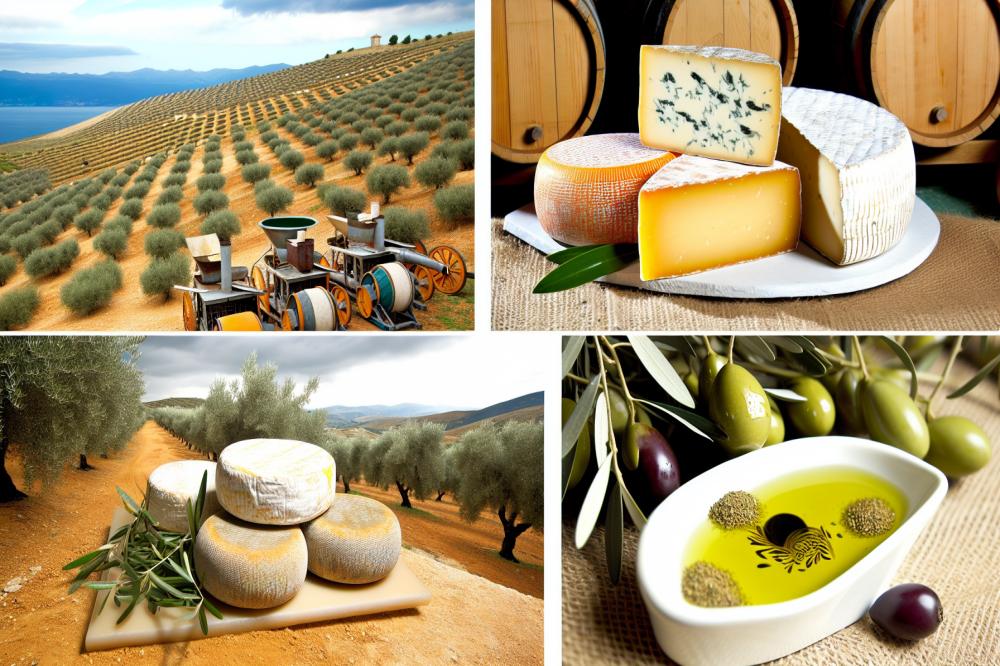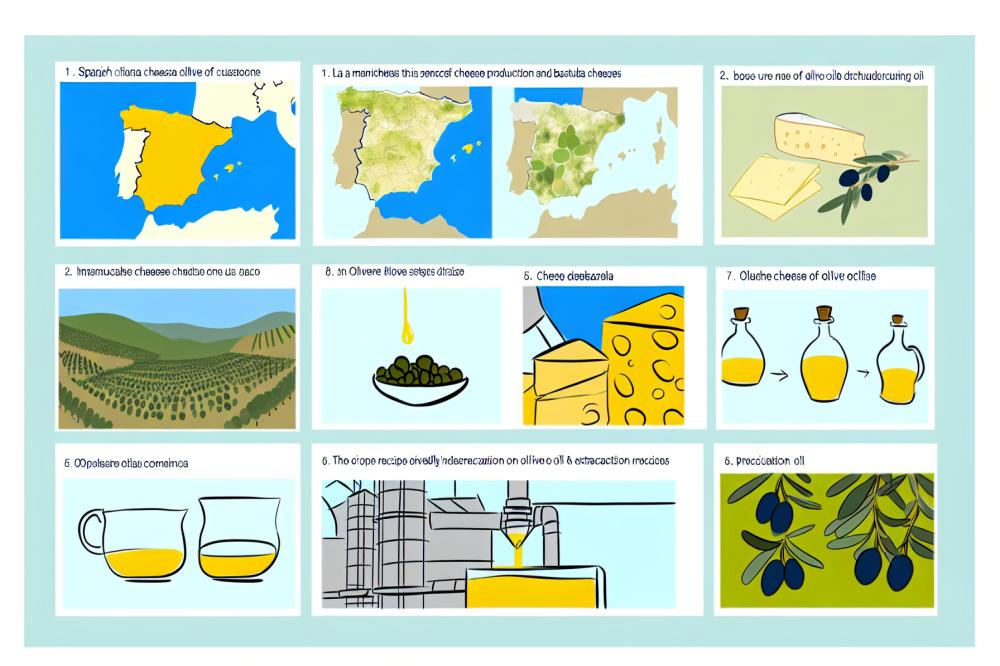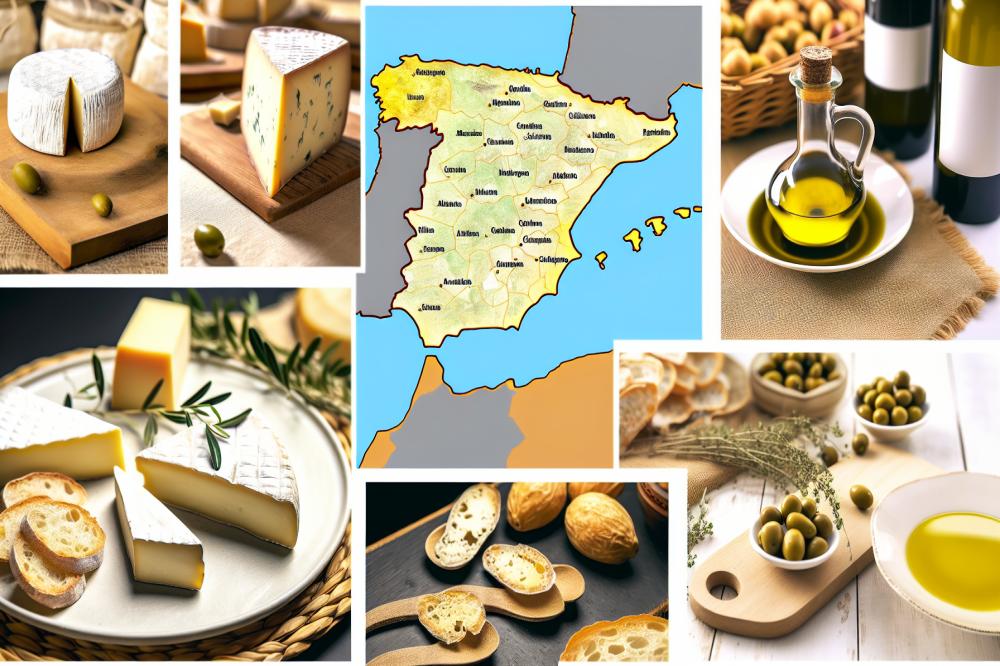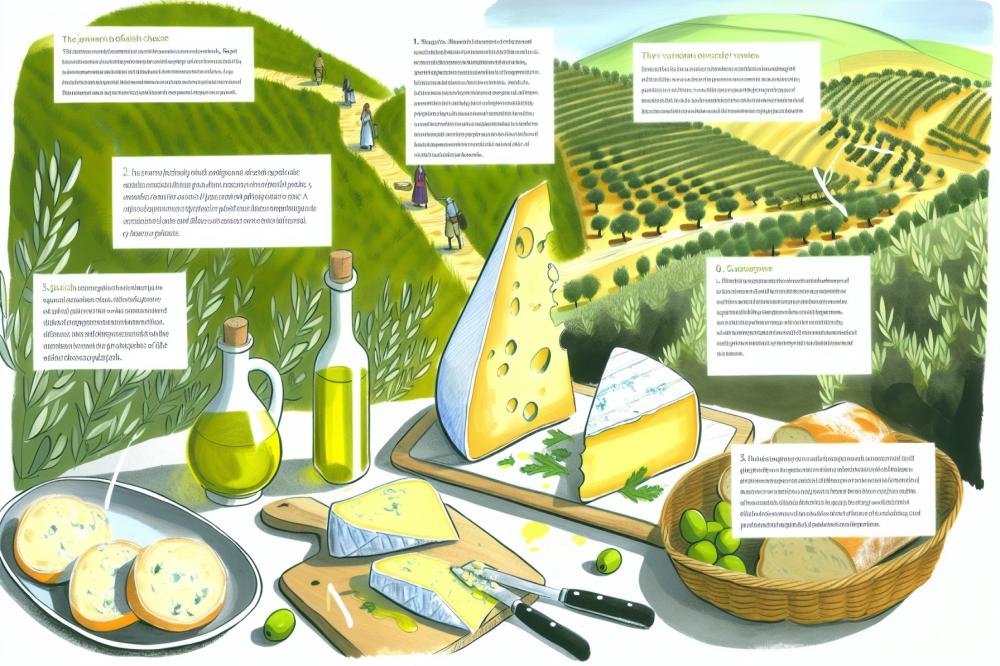Introduction
Spanish cheese holds a prominent place in the culinary landscape, cherished for its diverse flavors and textures. Across the country, various regions contribute distinct varieties that reflect local traditions and milk sources. From the tangy Cabrales of Asturias to the creamy Mahón from Menorca, each cheese tells a story of its origin.
Regions such as Andalusia, Castilla-La Mancha, and Catalonia are crucial players in the cheese scene. In these areas, time-honored techniques meet modern innovation, creating a rich tapestry of options. Cheeses are often paired with local wines and, interestingly, olive oil from nearby groves. olive oil production is as vital to Spanish cuisine as the cheeses, enhancing dishes with rich flavors and aromas.
Tips for enjoying Spanish cheese often include drizzling fresh olive oil over thick slices. The combination elevates both the simplicity and elegance of a meal, providing a delightful experience. Such pairings reveal the deep-rooted connection between these two culinary treasures, forming a crucial part of Spain‘s gastronomic identity. Together, they exemplify the remarkable bounty that originates from this vibrant country.
Spanish Cheese

Spain is home to a variety of cheeses, each with its distinct flavor and texture. Manchego is perhaps the most famous. This cheese comes from the La Mancha region. It has a firm texture with a nutty taste. Some enjoy it aged, which enhances its richness.
Cabrales, on the other hand, hails from Asturias. This blue cheese offers a strong flavor. It is often made from cow’s milk, though sheep and goat’s milk can be included. The caves where Cabrales is aged provide a unique environment, allowing the cheese to develop a characteristic blue mold.
Idiazabal is another notable cheese. Originating in the Basque Country, it is usually made from unpasteurized sheep’s milk. This cheese has a smoky flavor. Producers often use traditional methods, including the use of wood fires during the production process. These methods give Idiazabal its special taste.
Cheese Regions
Many regions in Spain contribute to its rich cheese-making tradition. La Mancha, known for its Manchego, is characterized by vast plains and rolling hills. Asturias features lush green landscapes, perfect for grazing livestock that produce milk for Cabrales. In contrast, the Basque Country showcases rugged terrain, providing a unique environment for Idiazabal production.
Each region reflects its culture and climate in the cheeses produced. The variety of landscapes affects the types of milk used. Local traditions and recipes are passed down through generations, shaping the cheese’s identity.
Traditional Production Methods
Traditional methods play a crucial role in crafting these delicious cheeses. Many cheesemakers continue using time-honored techniques. For Manchego, curds are cut and placed into molds before being pressed. Aging can last from a few months to over a year. This process allows the flavors to develop fully.
Cabrales production involves a careful process. Artisans often mix different milks, resulting in a complex flavor profile. Aging takes place in natural caves, where temperature and humidity are controlled. This technique influences the mold growth and flavor diversification.
Idiazabal cheesemakers also focus on tradition. They heat the milk over open flames, a practice that imparts a distinctive smokiness. Most cheeses in Spain are often made with passion and care, ensuring quality in every bite.
Characteristics that define these cheeses include their texture, flavor, and the milk used. Aged varieties tend to be firmer and more intense. In contrast, younger cheeses are softer and milder. The diversity of Spanish cheeses is a reflection of the dedication and artistry found in each region.
olive oil production

Spain is famous for its olive oil, a key ingredient in Mediterranean diets. The country boasts several regions known for their production. Andalusia leads the charge, contributing over 80% of Spain’s olive oil. The province is filled with vast groves, stretching for miles. In Catalonia, smaller producers focus on artisanal techniques and unique flavor profiles.
The process of extracting olive oil is both art and science. First, olives are harvested, typically by hand or with mechanical shakers. Next, they are taken to mills, where the fruit is washed and crushed. This crushing releases oil from the cells. After that, the mixture is blended and pressed to separate the oil from the water and solids. The final step involves settling and filtering to create clear, high-quality oil.
Various types of olive oil are produced in Spain. Extra virgin olive oil is known for its low acidity and vibrant taste. Virgin olive oil is made from lighter presses and has a slightly different flavor. Other kinds, like refined olive oil, are often more neutral and used in cooking, while flavored oils provide additional notes for culinary exploration.
The relationship between olive oil and cheese is quite rich. Both products enhance each other’s flavors, making them perfect partners on a tasting board. Drizzling high-quality olive oil over soft cheese adds depth, while robust cheeses can stand up to the strong flavors of bold oils. This combination works wonderfully in salads and other dishes. Their synergy makes meals more enjoyable.
Pairing olive oil with cheese is a popular choice. Aged cheeses, for instance, can be paired with fruity oils for balance. Fresh cheeses benefit from the peppery notes found in certain oils. These combinations reflect the region’s cultural heritage and culinary practices, showcasing local ingredients in delightful ways.
Recipe: Spanish Cheese with Olive Oil Drizzle

This simple recipe combines the rich flavors of Spanish cheese with the vibrant taste of extra virgin olive oil. It’s perfect as an appetizer or a light snack. Let’s dive into the details.
Ingredients
- 200g Spanish cheese (e.g., Manchego or Idiazabal)
- 4 tablespoons extra virgin olive oil
- Fresh herbs (e.g., rosemary or thyme)
- Sea salt and black pepper to taste
- Crusty bread for serving
Recipe Instructions
- Begin by cutting the cheese into wedges or cubes. The size can vary based on preference.
- Next, arrange the cheese on a serving platter. This adds to the visual appeal.
- Generously drizzle the extra virgin olive oil over the cheese. Don’t hold back!
- Sprinkle fresh herbs, sea salt, and black pepper to enhance flavors.
- Serve with slices of crusty bread. This combination creates a delightful experience.
Nutritional Information
Per serving, expect approximately 250 calories. This dish delivers about 10 grams of protein, 20 grams of fat, and 15 grams of carbohydrates.
Health Benefits
Cheese provides rich calcium content, supporting strong bones. Good fats from olive oil promote heart health. Fresh herbs bring antioxidants that can boost overall wellness.
Final Thoughts

Spanish cuisine showcases a deep relationship between cheese and olive oil production. These two staples reflect the country’s agricultural traditions and culinary heritage. Different regions produce various types of cheese, each with its own distinctive flavor. Olive oil production, too, varies significantly based on local practices and climate.
The cultural significance of these products in Spain goes beyond mere food. They are part of family gatherings, special occasions, and daily meals. Sharing bread with cheese and a drizzle of olive oil is a cherished experience. This combination not only delights the palate but also brings people together, creating memories around the table.
Exploring these flavors together at home can be a joyful adventure. Pairing artisan cheeses with high-quality olive oil can elevate any meal. Whether it’s a simple snack or part of a larger gathering, these elements add richness to the culinary experience. They invite you to dive into the heart of Spanish culture and embrace its warmth.
So, gather some friends or family, and try out these delicious combinations. Let your taste buds enjoy the unique essence of Spain while discovering the beauty of its dairy and olive oil traditions.



